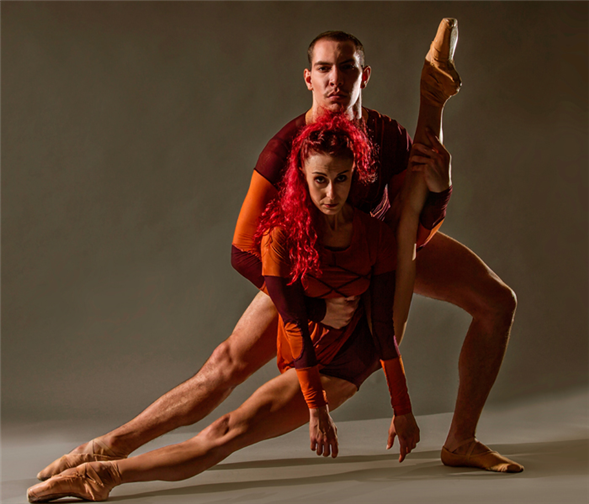Translate Page

Les Ballet Jazz de Montréal makes 'a proposition against negativity'
---
In a dance world that sometimes feels crowded by serious, overly esoteric troupes, Les Ballet Jazz de Montréal has long served as a joyous, sexy alternative. Its jazz tinge and focus on of-the-moment, international choreographers has garnered audience adoration both at home in Montreal and abroad. Even artistic director Louis Robitaille felt giddy when he first encountered BJM's style as a young boy. "In 1972, right when the company was founded, I went to my very first dance class at BJM's school," he remembers. "That was a huge experience. I was a teenager, and it was so fresh. I finally could express myself physically through that sort of dance."
When Robitaille came aboard in 1998, he brought the company a new focus on technical rigor, but its unabashed positivity and electric energy have remained his number one priority. From May 24 to 29 at the Joyce Theater, audiences can witness that blend via the New York premieres of three pieces by international choreographers.
Robitaille has crafted this specific combination of pieces with his constant aim of helping audiences feel the visceral impact he enjoyed as a kid. "Now, when I put together programs, I'm hoping the audience feels that same power I felt when I took that initial class," he explains.
To do so, Robitaille mixes and matches creators, who vary in specialty but are united in a strength of individual voice. "We're interested in working with the great new names in choreography," he says. "We work with them with the hope of exposing audiences to a wide range of what's going on in the larger dance world. We are anchored in what creation is today through these choreographers, but our aim of being democratic and accessible to audiences who do and don't know about dance remains the same as it has been since we were founded."
Robitaille seeks dancemakers not only for their trademark styles, but also for their ability to challenge dancers. "I think about how to pair pieces to make a night of varying colors that respects our generous, warm personality," he says. "The artists are all versatile, in dance and among other arts disciplines, even athletics. They're also curious: They want to experience different types of gestures and language movement, so the multitude of choreographic influences allows us to feed their artistic appetite while expanding the audience's view."
{Image1}
In this program, these goals have amounted to what Robitaille calls a "pedal to the floor" explosion, combining three physically demanding pieces to echo the company's current state. "There's no set and no scenery, just choreography, the dancers, music, lights, and costumes," he says. "Using just those five basic elements allows me to highlight the dancers' skill."
When Robitaille first saw Itzik Galili's sensual duet Mono Lisa, which is on the Joyce bill, he knew he had to bring it to his team. "I saw this piece on YouTube, when the dancers who performed it at Stuttgart Ballet showed it to me," he says. "It was exactly what I was looking for. When I piece together a night, I have something in mind, and I seek it out. At that point, I wanted to push our limits of endurance. Plus, I love the theatricality of a sex war, teasing each other, but also with a sense of humor in the interaction and competition."
Tasked with finding counterpoints, Robitaille took two different approaches. Kosmos walks a more traditional path, with choreographer Adonis Foniadakis and composer Julien Tarride creating a bustling cityscape of tension.
For Rodrigo Pederneiras' Rouge, Robitaille has been something of a producer. He has long hoped to pay tribute to the native population of Canada, and when he was in New York during Hurricane Sandy, he felt the wrath of nature paralleled the injustices indigenous people face. While he didn't want to create a narrative story out of this idea, he found the right starting point for an abstract piece in the music of the Brothers Grand. He felt Brazilian choreographer Pederneiras' knowledge of ballet, folk dance, and capoeira would perfectly complement the music.
Robitaille hopes that Rouge will offer a meaningful reflection on the cultural and environmental issues that inspired it. "There's so much aggression, miscomprehension, and pain in the world right now," he says. "Our dance is like medicine for this tension, a proposition against negativity."
---
TDF Members: At press time, discount tickets were available for Les Ballet Jazz de Montréal. Go here to browse all our current offers.
Writer and dancer Lauren Kay frequently covers dance for TDF Stages.
Top photo: A scene from "Mono Lisa," photographed by Alan Kohl. Photo of "Rouge" by Raphaelle Bob Garcia.